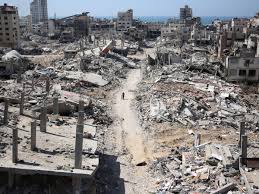
Breaking News
 GM's LMR battery breakthrough means more range at a lower cost
GM's LMR battery breakthrough means more range at a lower cost
 CPI Better than Expected Thanks to a Drop in the Price of Food
CPI Better than Expected Thanks to a Drop in the Price of Food
Top Tech News
 Cab-less truck glider leaps autonomously between road and rail
Cab-less truck glider leaps autonomously between road and rail
 Can Tesla DOJO Chips Pass Nvidia GPUs?
Can Tesla DOJO Chips Pass Nvidia GPUs?
 Iron-fortified lumber could be a greener alternative to steel beams
Iron-fortified lumber could be a greener alternative to steel beams
 One man, 856 venom hits, and the path to a universal snakebite cure
One man, 856 venom hits, and the path to a universal snakebite cure
 Dr. McCullough reveals cancer-fighting drug Big Pharma hopes you never hear about…
Dr. McCullough reveals cancer-fighting drug Big Pharma hopes you never hear about…
 EXCLUSIVE: Raytheon Whistleblower Who Exposed The Neutrino Earthquake Weapon In Antarctica...
EXCLUSIVE: Raytheon Whistleblower Who Exposed The Neutrino Earthquake Weapon In Antarctica...
 Doctors Say Injecting Gold Into Eyeballs Could Restore Lost Vision
Doctors Say Injecting Gold Into Eyeballs Could Restore Lost Vision
 Dark Matter: An 86-lb, 800-hp EV motor by Koenigsegg
Dark Matter: An 86-lb, 800-hp EV motor by Koenigsegg
 Spacetop puts a massive multi-window workspace in front of your eyes
Spacetop puts a massive multi-window workspace in front of your eyes
A Masterclass in Sanitized Cruelty

Yet the irony is almost unbearable: his own article is a masterclass in precisely that. Ames purports to clarify, to cut through the noise and deliver a sobering verdict on what he calls "The Gaza Famine Myth." But what he's really doing is laundering moral cowardice through the language of skepticism.
Let's be extremely clear here. This is not an honest effort to parse facts. It is a carefully calculated attempt to recast a humanitarian catastrophe as a narrative inconvenience. Ames's central trick is both obvious and deeply dangerous: he swaps moral clarity for semantic wrangling, treating the absence of an official "famine" designation as evidence that there is no famine at all.
This is the bureaucratic version of "Who are you going to believe—me, or your lying eyes?"
Famine declarations are not handed out like parking tickets. The Integrated Food Security Phase Classification (IPC) requires the confluence of three rather horrifying metrics: at least 20% of the population facing extreme food shortages, 30% of children suffering acute malnutrition, and a death rate of two per 10,000 per day. These thresholds are conservative by design, and catastrophically hard to confirm in active war zones. Especially when the occupying force restricts access, bombs convoys, and refuses to allow independent verification on the ground.
Ames doesn't mention this. Instead, he presents the absence of certification as proof of absence. It's a sleight of hand—legalistic, bloodless, and intellectually dishonest.
What is happening in Gaza right now is not ambiguous. It is not speculative. The United Nations has warned repeatedly of impending famine. UNICEF has documented the collapse of clean water and sanitation. USAID's own chief, Samantha Power—no stranger to statecraft or calculated language—acknowledged that Gaza was "credibly" in famine. And that was over a year ago. But rather than confront reality, Ames performs semantic gymnastics, accusing others of exaggeration while cherry-picking anecdotes to build his case.
The most egregious example is his invocation of Gaza-based Instagram chefs and car dealerships. As if the presence of a single social media account or a functioning auto lot somehow cancels out the images of skeletal toddlers and mothers boiling weeds for food. This is not journalism. It's closer to comedy, but who, I ask, is laughing?
It's worth pausing here to consider the mindset required to frame this as a debate about perception rather than survival. The mass starvation of children is not a matter of optics. It is a matter of record. According to credible reports, even published by Israeli media, 100% of Gaza's population is facing crisis-level hunger. That number should chill anyone with a functioning conscience.

 What Steak Thickness is Best?
What Steak Thickness is Best?
 Coke Train: Why It Matters!
Coke Train: Why It Matters!
 Node without Consent
Node without Consent

